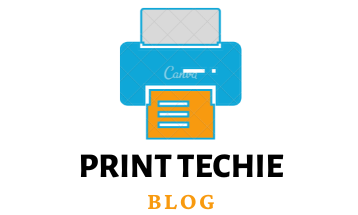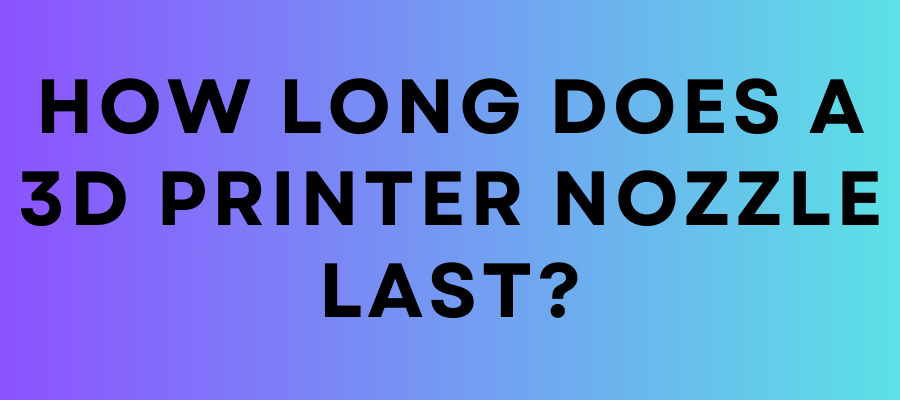In the ever-evolving world of 3D printing, one question frequently surfaces among enthusiasts and professionals alike: “How long does a 3D printer nozzle last?” This seemingly simple query unlocks a critical aspect of 3D printing, pivotal to both the quality of your prints and the efficiency of your printing process. In this comprehensive guide, we delve into the factors that influence the lifespan of a 3D printer nozzle, signs to watch for indicating it’s time for a replacement, and strategies to extend its longevity. Whether you’re a seasoned 3D printing veteran or a curious newcomer, understanding nozzle longevity is key to optimizing your printing performance and ensuring consistent, high-quality results.
how long does a 3d printer nozzle last?
The lifespan of a 3D printer nozzle varies significantly based on several factors, including the material of the nozzle, the type of filament used, printing temperature, speed, and frequency of use. Typically, a brass nozzle, commonly used with standard filaments like PLA or ABS, can last for about 3-6 months with regular use. However, if you’re printing with abrasive materials like carbon fiber-infused filament, the nozzle wears out faster, and you might need to replace it every 1-2 months. Using more durable nozzles made of hardened steel or other high-grade materials can extend this lifespan. Regular maintenance and proper printing practices also play a crucial role in maximizing the longevity of your 3D printer nozzle.
II. Factors Influencing Nozzle Lifespan
The lifespan of a nozzle is not just a matter of time; it’s influenced by a symphony of factors, each playing its part in determining how long your nozzle will effectively serve its purpose.
A. Material Used in the Nozzle The choice of nozzle material is a balancing act between cost, durability, and the type of filament used. Brass nozzles are common due to their good thermal conductivity, but they wear out faster with abrasive materials. Stainless steel or hardened steel nozzles, while more expensive, can withstand more demanding printing tasks, especially when using filaments infused with carbon fiber or other abrasive materials.
B. Printing Temperature and Speed Higher temperatures and rapid printing speeds put more strain on the nozzle. While pushing the limits might seem like a good way to speed up the printing process, it can significantly reduce the nozzle’s lifespan. The key is to find a sweet spot where the temperature and speed align with the material’s requirements and the printer’s capabilities.
C. Frequency of Use The more you print, the quicker your nozzle wears out. It’s like the tires on a car – the more miles you drive, the sooner you’ll need to replace them. Frequent printing, especially with abrasive materials, accelerates the wear and tear on the nozzle.
D. Maintenance Practices Maintenance is the lifeline of a 3D printer nozzle. Regular cleaning to remove any residual material and periodic inspections for damage can greatly prolong the life of a nozzle. Ignoring maintenance can lead to clogging, uneven extrusion, and ultimately, a decrease in print quality.
III. Signs of a Worn-Out Nozzle
Knowing when your nozzle is on its last legs can save you from the frustration of failed prints and wasted materials.
A. Poor Print Quality
When the quality of your prints begins to deteriorate, it’s often a telltale sign that your nozzle is wearing out. This can manifest as rough surfaces, inconsistent layers, or details that aren’t as sharp as they used to be. If your prints used to come out crisp and clean but now appear lackluster, it’s time to examine your nozzle.
B. Clogging Issues
A nozzle that’s nearing the end of its lifespan may get clogged more frequently. These clogs can be caused by small particles or worn material from the nozzle itself mixing with the filament. If you find yourself constantly unclogging your printer, it’s a strong indication that your nozzle needs attention.
C. Uneven Extrusion
Uneven extrusion is another symptom of a worn nozzle. If your printer starts to extrude too much material in some areas and too little in others, resulting in an uneven surface and inconsistent layering, it’s a sign that the nozzle is no longer able to regulate the flow of material effectively.
Read: Mastering 3D Printing First Layer Ripples
IV. Extending 3d printer Nozzle Lifespan
Extending the lifespan of your nozzle is all about proactive care and optimal usage. Here’s how to ensure your nozzle lasts as long as possible.
A. Choosing the Right Nozzle Material
Match your nozzle material to the type of filament you use most often. For standard filaments like PLA or ABS, brass nozzles are adequate. For abrasive filaments, consider investing in a hardened steel nozzle. Remember, the right material can significantly delay the wear and tear on your nozzle.
B. Proper Temperature and Speed Settings
Use the manufacturer’s recommended settings for temperature and speed as a starting point. Experimenting with these settings can be tempting, but extreme deviations can harm your nozzle. A moderate approach will often yield the best results over the long term.
C. Regular Maintenance Routine
Establish a regular maintenance routine that includes checking for any signs of wear, cleaning the nozzle to prevent clogging, and replacing it if necessary. This routine maintenance can not only extend the life of your nozzle but also ensure consistent print quality.
D. Tips for Avoiding Clogs
Preventing clogs is key to nozzle longevity. Use high-quality filaments to reduce the risk of impurities causing blockages. Also, ensure your printer is correctly calibrated, as improper calibration can lead to excessive pressure on the nozzle, increasing the risk of clogs.
V. When to Replace the 3d printer Nozzle
Knowing when to replace your nozzle is crucial for maintaining the quality of your prints.
A. Visual Inspection Regularly inspect your nozzle for any signs of physical damage, such as deformities or wear. If the nozzle appears distorted or significantly worn, it’s time for a replacement.
B. Frequency of Nozzle Replacements Keep a log of how often you’re replacing your nozzles. An increase in the frequency of replacements can be a sign of other issues with your printer that need addressing, such as calibration problems or using inappropriate materials.
C. Impact on Print Quality If your print quality is consistently poor despite troubleshooting other potential causes, replacing the nozzle may be the solution. A fresh nozzle can often immediately improve the quality of your prints.
Read: How To 3d Print Clay Cutters
Final Thoughts
In conclusion, the nozzle is a pivotal component in the 3D printing process. By understanding its role, factors affecting its lifespan, signs of wear and maintenance strategies, you can greatly enhance your 3D printing experience. Regular attention and care for your nozzle not only ensure high-quality prints but also save you time and resources in the long run. The key is to remain vigilant about the nozzle’s condition and proactive in its maintenance. By doing so, you’ll keep the heart of your 3D printer beating strong, enabling it to bring your creative visions to life with precision and reliability. Remember, in the world of 3D printing, the smallest parts often make the biggest difference. Happy printing!

